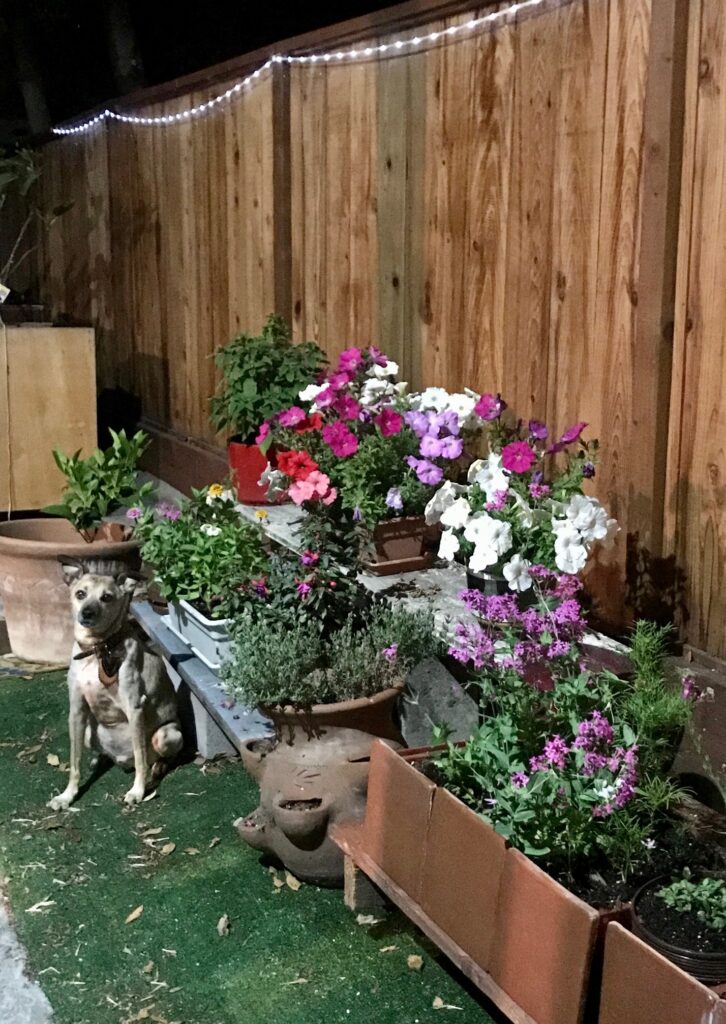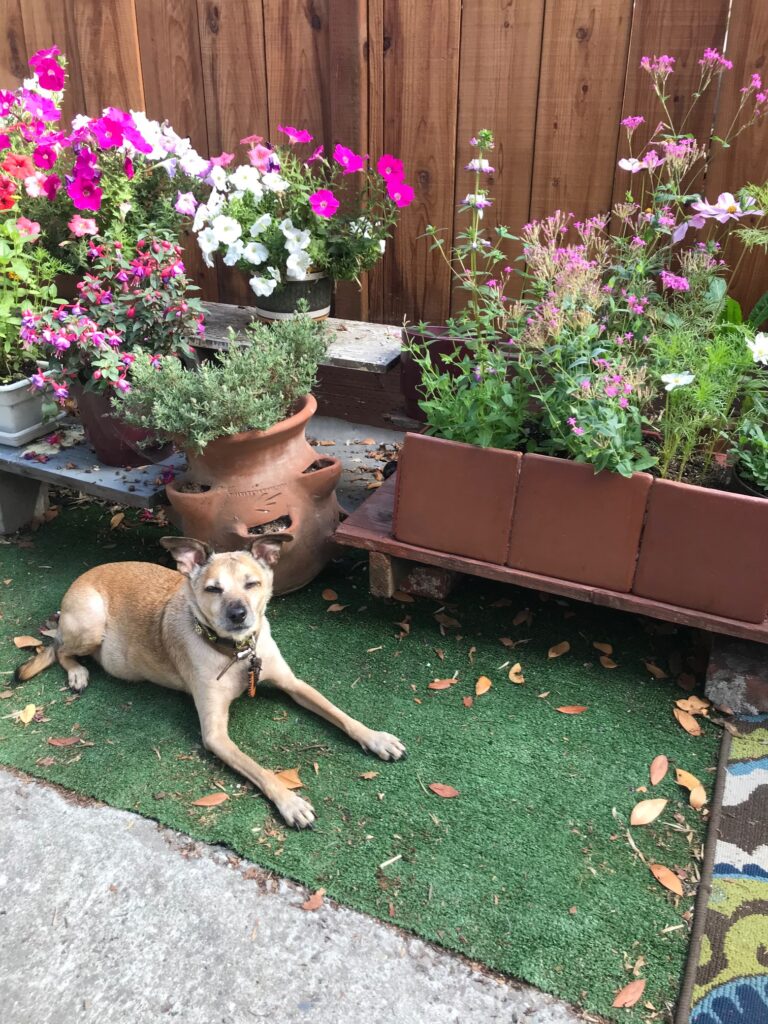Petunias Are Not Toxic to Cats, Dogs or Horses

For those of us who enjoy having pets and plants, creating a safe haven for your pets to enjoy plants can become a growing hobby. It is always nice when we can come across a plant or flower that is safe for animals domestic and wild that may encounter it, that is also fairly easy to grow. Petunias are one of those worry-free plants that are dog-friendly and aesthetically pleasing. And if you like to do container gardening, like I do, you can experiment with plant placement to help these flowers do well and spread their colors throughout your garden. I like to put flowers where I can easily reach them so that I can do some deadheading daily so that they continue to blossom.
Physical Attributes
| Attribute | Description |
|---|---|
| Plant Type | Herbaceous annuals[1][3] |
| Family | Solanaceae (nightshade family)[1][3] |
| Height | 6-18 inches[2] |
| Spread | 18 inches to 4 feet[2] |
| Leaves | Oval-shaped, green, smooth or slightly hairy[1][3] |
| Flowers | Trumpet-shaped, showy, wide range of colors (red, pink, purple, white, yellow), 1-6 inches diameter, single or double blooms[1][2][3][4] |
| Bloom Time | Spring to fall[1][4] |
| Growth Habit | Upright, spreading, trailing varieties[4][5] |
General Care Tips
- Plant in full sun to partial shade[1][2][4]
- Well-draining, fertile soil[1][2]
- Water regularly, don’t allow soil to dry out completely[1][2]
- Fertilize monthly with balanced fertilizer[2]
- Deadhead spent blooms to encourage more flowering[2]
- Pinch back leggy growth to promote bushiness[2]
- Harden off seedlings before transplanting outdoors[2]
Fun Facts
- Native to South America[1][3][5]
- Fragrant flowers in some cultivars[4][5]
- Attract pollinators like bees, butterflies, and hummingbirds[1][5]
- Petunias are in the same family as tomatoes, peppers, and potatoes[5]
- Hundreds of named varieties with different flower sizes, colors, patterns[4]
- Can be grown as perennials in warm climates (USDA zones 9-11)[5]
- The name “petunia” is derived from the French, relating to the tobacco plant[3]

So you know, we check all the plants, flowers, and shrubs we feature on our site with the ASPCA and do extensive internet research for both the common and scientific name just to be super pet safe. If we cannot find direct reference, we check up to genus and so on until we can confirm whether a plant is toxic or non toxic to both cats and dogs. If we are not sure, or get contradictory information, we do not include it. Many of the plants featured we have grown successfully in our own pet safe garden in Northern California. You can see many of garden stars in photos from Lovie’s Pet Safe Garden.
| Consideration | Details |
|---|---|
| Container Friendly | Yes, petunias are excellent for containers, hanging baskets, and window boxes.[1][2][4] |
| Indoor/Outdoor | Outdoor plant only.[1][3][5] |
| Sun/Shade | Prefer full sun but can tolerate partial shade.[1][2][3][4][5] |
| Perennial/Annual | Grown as annuals in most regions, perennials in zones 9-11.[1][3][5] |
| Flowering | Prolific bloomers from spring until frost.[1][3][4][5] |
| Drought Tolerant | Somewhat drought tolerant once established.[2][4] |
| Pollinator Magnet | Yes, petunias attract bees, butterflies, and hummingbirds.[1][4][5] |
| Beginner Friendly | Yes, petunias are easy to grow and low maintenance.[1][2][4][5] |
| Good Ground Cover | Yes, spreading petunias can be used as ground cover.[3][4] |
| Good Privacy Screen | No, petunias grow too short for an effective privacy screen.[1][3][5] |
| Invasive/Spreader | Not invasive, but some varieties can spread/trail.[4] |
| Hardy/Delicate | Relatively hardy annual that can tolerate heat and some drought.[2][4] |
| Rodent Repellent | May help deter some pests like tomato hornworms.[4] No evidence on rodents. |
| Deer Resistant | No, deer may browse on petunias.[2] |
| Native To | Native to South America.[1][3][4][5] |
| Ideal States/Regions | Grow well across most of the United States in summer.[1][2][3][5] |
Citations:
[1] https://housing.com/news/petunia/
[2] https://hgic.clemson.edu/factsheet/petunia/
[3] https://www.britannica.com/plant/petunia
[4] https://extension.umn.edu/flowers/growing-petunias
[5] https://www.gardenia.net/guide/petunia-plant-care-and-growing-guide
[6] https://www.gardenia.net/guide/petunia-plant-care-and-growing-guide
[7] https://planttalk.colostate.edu/topics/annuals-perennials/1035-petunia/
[8] https://hgic.clemson.edu/factsheet/petunia/
[9] https://housing.com/news/petunia/
[10] https://extension.umn.edu/flowers/growing-petunias





